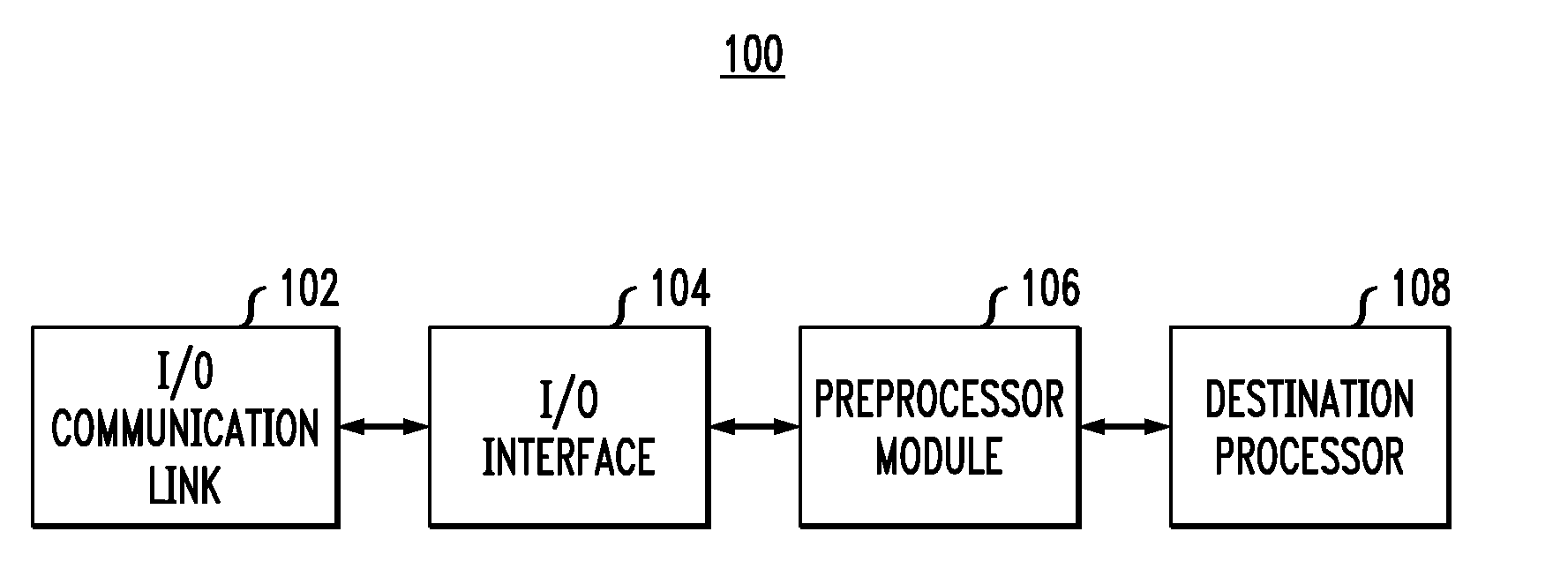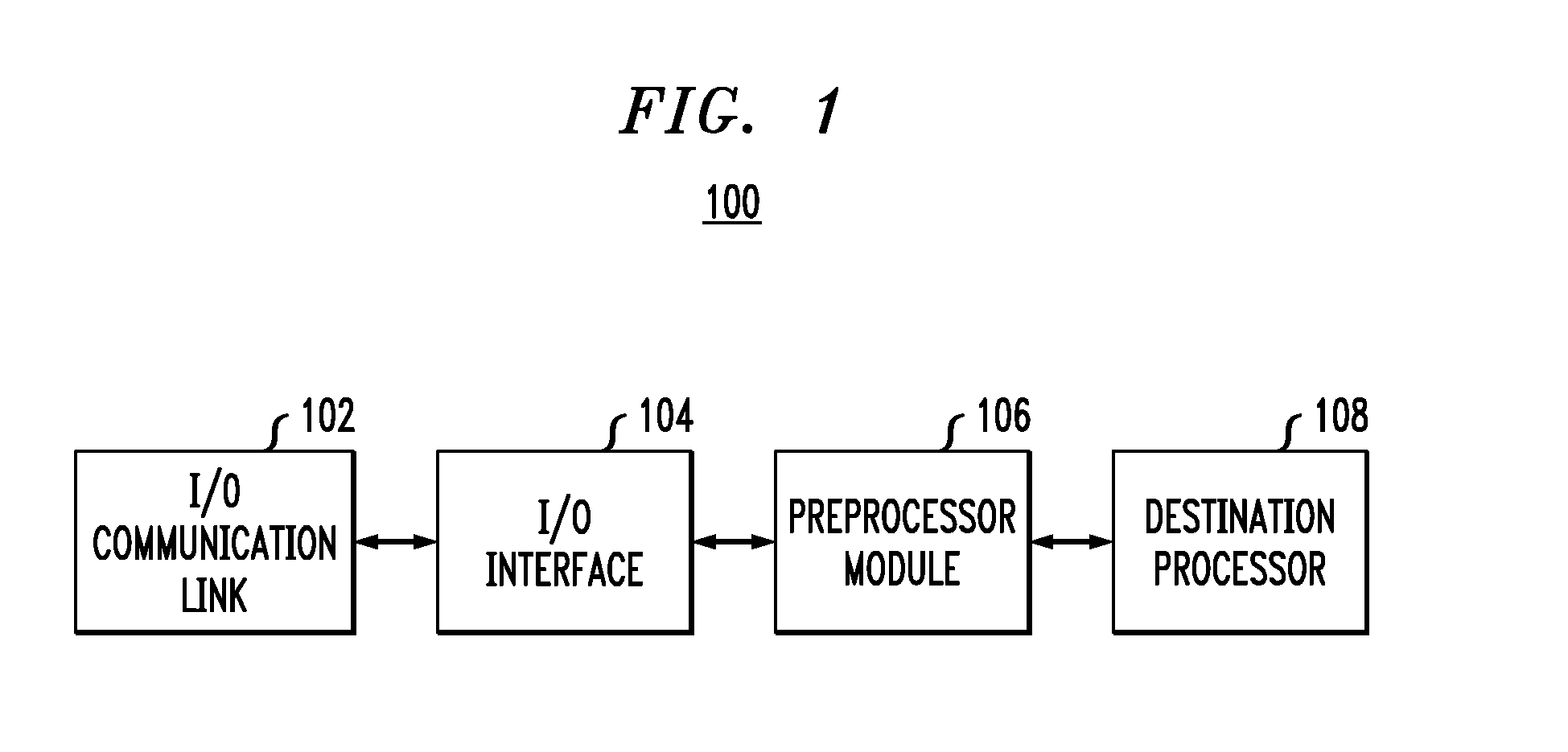Packet reassembly processing
a packet and reassembly technology, applied in the field of communication systems, can solve problems such as limiting the overall throughput of the network
- Summary
- Abstract
- Description
- Claims
- Application Information
AI Technical Summary
Benefits of technology
Problems solved by technology
Method used
Image
Examples
Embodiment Construction
[0013]In accordance with embodiments of the present invention, increase of throughput might occur by preprocessing, such as at least starting to deinterleave, reassemble, and order minipackets, before sending minipackets to a destination processor. For example, a single (or otherwise small number) of queues might be used to begin reassembly and reordering of AAL traffic before sending the AAL traffic to the destination processor. In bursty traffic, for example, multiple AAL minipackets might be received for a single conversation before a minipacket is received for a subsequent conversation. When a subsequent conversation is received, the preprocessing might suspend reassembly of the prior conversation, supply the prior conversation “chunk” to the destination processor, and start “chunking” the subsequent conversation. Scaling allows for more than one chunking operation at a time to preprocess the AAL traffic. Also, other events might trigger the preprocessing to send the partially r...
PUM
 Login to View More
Login to View More Abstract
Description
Claims
Application Information
 Login to View More
Login to View More - R&D
- Intellectual Property
- Life Sciences
- Materials
- Tech Scout
- Unparalleled Data Quality
- Higher Quality Content
- 60% Fewer Hallucinations
Browse by: Latest US Patents, China's latest patents, Technical Efficacy Thesaurus, Application Domain, Technology Topic, Popular Technical Reports.
© 2025 PatSnap. All rights reserved.Legal|Privacy policy|Modern Slavery Act Transparency Statement|Sitemap|About US| Contact US: help@patsnap.com



